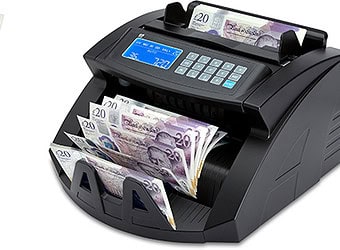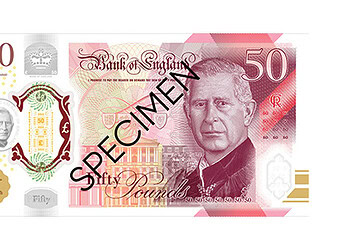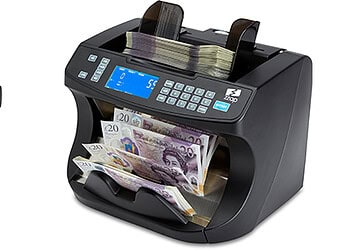Polymer banknotes are made using a layered printing process. Starting with a polymer sheet, each element is added to the banknote until it is complete, cut and tested for imperfections. The Bank of England produces over a billion notes every year and every note is made the same.
Polymer banknotes were introduced to the UK with the new £5 note in September 2016. This was the first of the banknotes to be replaced with new polymer versions. By 2020, the polymer £20 will be issued, with the new £50 coming sometime later.
Who Invented Polymer Notes?
David Solomon is credited with inventing the polymer banknote. At the request of the Reserve Bank of Australia, he and his team embarked on the “bank project”, a 20 year project that lasted from 1968 to 1988.
The result was the first polymer banknote, which was produced by the Reserve Bank of Australia. The first polymer banknote was a commemorative A$10 note that celebrated Australia’s 200 year history.
Once one of the biggest importers of banknotes and banking resources, Australia now leads the way in secure, polymer banknotes. The original polymer note design features many of the security elements we see in our new banknotes today. These include the see-through window and diffraction grating.
What Countries have polymer notes?
Today, there are more than 30 different denominations totalling some three billion polymer notes in service in 22 countries worldwide.
Why were polymer notes introduced in the UK?
The new polymer bank =notes are made to be much harder to counterfeit and be much more resilient to everyday wear and tear, as well as the occasional trip in the washing machine.
Making New Banknotes
The first step to making a new polymer note is deciding on a character. This gives the government an opportunity to commemorate a person who has made a major contribution to the nation.
Winston Churchill was chosen to be on the new fiver, while Jane Austin and JMW Turner are featured on the £10 and £20 respectively.
Once the character is decided, the Bank of England needs to decide on the security features they want to include. This is extremely important and one of the driving factors for updating the banknotes. The government works hard to fight the ongoing war against counterfeiting, which costs businesses millions of pounds every year.
Here is a video of the new £5 polymer note being made.
The Process of Making Polymer Banknotes
Unlike paper notes that are made using traditional, yet sophisticated, printing methods, polymer banknotes are made up of a number of layers and components that are applied in stages to create a complete banknote.
Step 1: Polymer sheets have the see-through windows and are ready for printing
Step 2: The note imagery is printed on both sides
Step 3: The sheets are fed one by one into the foiling machine
Step 4: Foils are applied from a roll of tape onto the note
Step 5: The Queen’s portrait is added
Step 6. The notes are then UV treated
Step 7: A guillotine cuts the sheets into individual notes
Step 8: The new notes then go through over 200 rigorous tests
When any new banknotes are created, they go through a testing period to make sure that cash machines and cash counters are compatible with them. Our range of banknote counters are kept fully up to date with the latest technology, so you know that no matter what kind of note gets issued, you have the best machines for the job.












